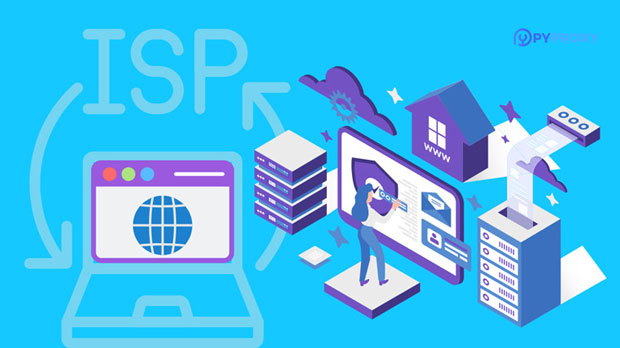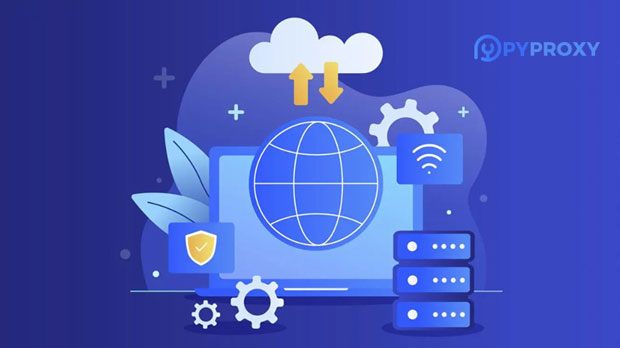In the world of proxies, performance metrics such as latency and packet loss rate are key factors for assessing the quality of a proxy server. Among the many proxy solutions available, PYPROXY and Squid Proxy are two popular choices. Understanding how these two compare in terms of latency and packet loss can help users make a more informed decision based on their specific needs. In this article, we will conduct an in-depth analysis of both PyProxy and Squid Proxy, evaluating their performance in relation to latency and packet loss, and determining which one offers a better experience. Understanding Proxy Servers: What Are PyProxy and Squid Proxy?Before diving into a comparison of latency and packet loss, it's important to understand what PyProxy and Squid Proxy are, and how they function in the broader context of network performance.1. PyProxy: PyProxy is a lightweight proxy server solution written in Python, designed for fast and flexible proxying of internet traffic. Known for its simplicity and ease of setup, PyProxy is often used for specialized tasks where low resource consumption is a priority. PyProxy can be particularly useful in scenarios where developers need to create custom proxy functionalities quickly.2. Squid Proxy: Squid Proxy, on the other hand, is one of the most widely used open-source proxy servers. It provides caching and forwarding services, which can improve web performance by reducing latency in scenarios where users frequently access the same resources. Squid is widely adopted in enterprise environments due to its robust feature set, high scalability, and advanced configuration options.Factors Affecting Latency in Proxy ServersLatency refers to the delay experienced when a packet of data is transmitted from one point to another. In proxy servers, this delay is often caused by the time it takes for the proxy to process requests and relay data. Several factors can affect latency, including:1. Server Location: The physical location of the proxy server plays a major role in latency. A proxy server located closer to the user will generally result in lower latency, as the data does not have to travel as far.2. Proxy Configuration: The configuration of the proxy server can also impact latency. For instance, PyProxy, being a Python-based server, may introduce more processing delays compared to Squid, which is optimized for high-performance environments.3. Traffic Volume: The volume of data passing through the proxy can also contribute to latency. In high-traffic scenarios, proxies may struggle to handle requests efficiently, leading to delays.Latency Comparison: PyProxy vs Squid ProxyWhen comparing PyProxy and Squid Proxy in terms of latency, there are several key points to consider:1. PyProxy Latency: As a Python-based proxy, PyProxy is often considered slower in terms of processing time when compared to Squid. Python, being an interpreted language, may introduce more overhead in handling requests, especially when processing large amounts of data. This results in slightly higher latency, particularly when the server is under heavy load.2. Squid Proxy Latency: Squid, being a highly optimized C-based proxy, generally exhibits lower latency. Squid is designed for high-speed performance, particularly when handling large numbers of requests simultaneously. It also includes advanced caching mechanisms that can further reduce latency by storing frequently accessed data closer to the user, minimizing the need for repeated requests.Based on these factors, Squid Proxy is likely to offer lower latency overall compared to PyProxy, especially in high-traffic environments or when handling complex requests.Packet Loss and Its Impact on Proxy ServersPacket loss refers to the failure of one or more data packets to reach their intended destination during transmission. In a proxy server context, packet loss can occur for various reasons, including network congestion, faulty hardware, or issues with the proxy server itself.1. Network Congestion: If the network connecting the proxy server to its clients is congested, packets may be dropped. This is more common in environments where many clients are using the proxy simultaneously.2. Server Performance: A proxy server with high resource consumption may struggle to process requests efficiently, leading to packet loss. Servers that cannot handle the load may drop packets in an attempt to maintain their performance.Packet Loss Comparison: PyProxy vs Squid ProxyThe rate of packet loss can vary between PyProxy and Squid Proxy, depending on their respective capabilities and configurations:1. PyProxy Packet Loss: Given that PyProxy is a lightweight, Python-based solution, it may experience higher packet loss rates under heavy traffic conditions. The server's processing capabilities can be limited by the underlying Python interpreter, which may result in higher resource usage, leading to packet loss when the system is under load.2. Squid Proxy Packet Loss: Squid Proxy, being a more robust and scalable solution, generally exhibits lower packet loss, especially when configured correctly. Squid is designed to handle large volumes of traffic efficiently, with mechanisms in place to manage resource usage and prevent packet loss during high-load periods. Additionally, Squid’s caching mechanisms can reduce the overall number of requests that need to be processed, thus reducing the likelihood of packet loss.Which Proxy Offers Better Performance in Terms of Latency and Packet Loss?When evaluating which proxy offers better performance in terms of latency and packet loss, it is important to consider the specific use case and environment in which the proxy will be deployed.1. For Low-Latency Needs: If low latency is a critical requirement, Squid Proxy is the better option. Its optimized codebase, caching mechanisms, and high scalability make it ideal for environments that require fast data processing and minimal delay.2. For Resource-Light Environments: If the goal is to run a lightweight, low-resource proxy server for smaller-scale applications or special use cases, PyProxy might be a suitable choice. However, users should be prepared for potentially higher latency and packet loss under heavier loads.In conclusion, while both PyProxy and Squid Proxy serve as effective proxy server solutions, Squid Proxy generally outperforms PyProxy in terms of latency and packet loss. Squid’s performance advantages stem from its robust design, optimized codebase, and advanced caching mechanisms, making it the better choice for environments where low latency and minimal packet loss are essential. On the other hand, PyProxy may be better suited for simpler, smaller-scale applications where lightweight and flexible proxying is more important than performance metrics. Ultimately, the choice between PyProxy and Squid Proxy depends on your specific network needs and requirements.
Sep 08, 2025


































































